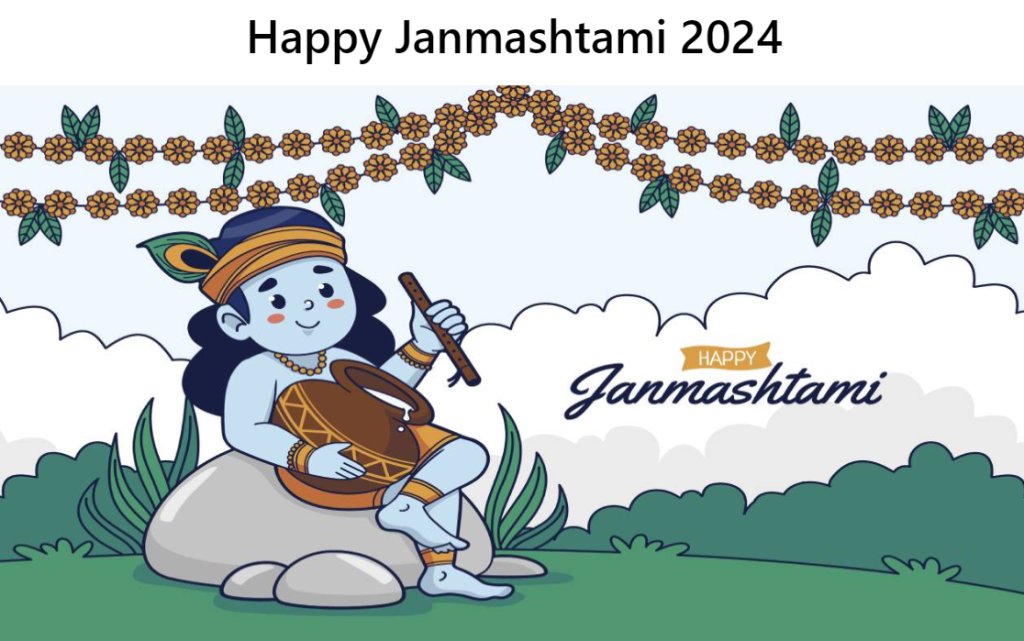Celebrating Janmashtami: Traditions, Rituals, and Significance

Introduction
Janmashtami, also known as Krishna Janmashtami, is one of the most cherished and vibrant festivals celebrated by Hindus worldwide. It marks the birth of Lord Krishna, the eighth avatar of Vishnu, who is revered for his teachings in the Bhagavad Gita and his role in the epic Mahabharata. This festival, falling in the Hindu month of Bhadrapada (August-September), is celebrated with great fervor, devotion, and joy. In this article, we delve into the traditions, rituals, and significance of Janmashtami, offering a comprehensive guide to understanding and celebrating this auspicious occasion.
The Significance of Janmashtami
Janmashtami holds immense spiritual significance for Hindus. It symbolizes the victory of good over evil, as Lord Krishna, born to annihilate the demon king Kansa, represents the triumph of righteousness. Krishna’s teachings, life, and playful antics are celebrated and remembered during this festival. His birth in a prison cell, his miraculous escape to Gokul, and his divine childhood are central themes of Janmashtami, highlighting the omnipresence and benevolence of the divine.
Traditions and Rituals of Janmashtami
Fasting and Devotional Practices
- Fasting (Upavasa): Devotees observe a strict fast on Janmashtami, refraining from consuming grains and cereals. Some opt for a Nirjala fast, consuming only water, while others follow a Phalahar fast, consuming fruits, milk, and other non-cereal foods.
- Midnight Vigil (Jagaran): Lord Krishna is believed to have been born at midnight. Devotees stay awake, chanting hymns, reading scriptures, and singing devotional songs to welcome his birth.
Preparation and Decoration
- Cleaning and Decorating: Homes and temples are thoroughly cleaned and adorned with flowers, rangoli (colorful floor designs), and lights. The idol of baby Krishna is placed in a decorated cradle.
- Creating Jhankis: Jhankis are miniature representations of scenes from Krishna’s life, such as his birth, childhood pranks, and miracles. These dioramas are displayed in homes and temples, depicting key events and stories.
Special Worship and Offerings
- Abhishekam: The idol of baby Krishna is bathed in a mixture of milk, honey, ghee, curd, and water, symbolizing purification and devotion.
- Arati and Bhajans: Special arati (ritual of light) and bhajans (devotional songs) are performed, filling the atmosphere with spiritual fervor.
- Offering Prasad: Devotees prepare and offer a variety of sweets and dishes to Lord Krishna, such as Makhan (butter), Mishri (rock sugar), and milk-based delicacies, which are later distributed as prasad.
Celebrating Janmashtami in Different Regions
North India
- Mathura and Vrindavan: These cities are closely associated with Krishna’s life and witness grand celebrations. Devotees flock to temples, especially the Krishna Janmabhoomi temple in Mathura, to partake in the festivities.
- Dahi Handi: A popular event in Maharashtra, particularly in Mumbai, involves forming human pyramids to break a pot of curd suspended high above the ground, symbolizing Krishna’s love for butter.
South India
- Tamil Nadu and Andhra Pradesh: Here, devotees create beautiful kolams (rangoli designs) and place small footprints from the entrance to the pooja room, symbolizing Krishna’s journey into their homes.
- Kerala: Devotees engage in reciting the Bhagavata Purana, focusing on the life and teachings of Krishna, accompanied by traditional dance and music performances.
East India
- West Bengal and Odisha: The day is marked by fasting, singing bhajans, and reading from the Bhagavad Gita. Temples are decorated, and special arati ceremonies are conducted.
- Manipur: The Manipuri community celebrates with traditional Raas Leela performances, depicting the divine dance of Krishna with the gopis (milkmaids).
Modern-Day Celebrations and Community Involvement
- Krishna Janmashtami in ISKCON: The International Society for Krishna Consciousness (ISKCON) organizes grand celebrations worldwide, including processions, kirtans (devotional singing), and dramas depicting Krishna’s pastimes.
- Social Media and Digital Celebrations: With the advent of technology, many devotees participate in online celebrations, joining virtual prayers, kirtans, and live-streamed temple events.
Conclusion
Janmashtami is not just a festival but a vibrant expression of devotion, joy, and cultural heritage. It unites people across different regions and backgrounds in a shared reverence for Lord Krishna. By observing the traditions and rituals of Janmashtami, devotees seek to imbibe the values of love, compassion, and righteousness that Krishna exemplified. As we celebrate this auspicious day, let us reflect on the timeless teachings of Lord Krishna and strive to lead a life filled with devotion and virtue.




